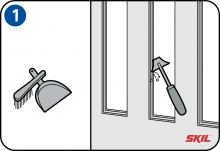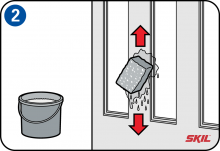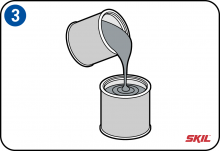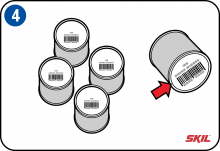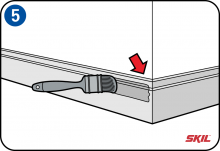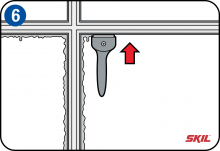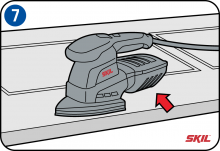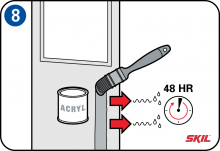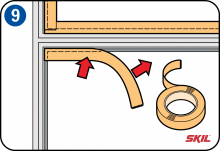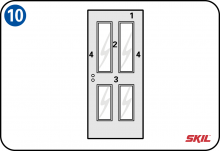-
Painting wooden doors and window frames
The first step when painting doors and window frames is to prepare the surface to be painted. That means you should check if any repairs are needed, such as filling holes, cracks or dents. Fill the surface where necessary and sand it smoothly. On larger areas you can strip to old paintwork with a hot air gun. This isn’t the most enjoyable task, but it’s important for a good result. Remove as many screws, nails, door handles and hinges as possible, and brush away the sanding dust.
-
Untreated doors and window frames
The best way to treat unpainted wooden doors and window frames is with a synthetic resin paint or water-based transparent varnish. The preparations are the same as for regular paint. Sand the surface lightly between the coats with fine sandpaper (180-240 grade). Between the coats, thoroughly remove dust with a moist cloth or sponge.
-
Apply a coat of primer
Apply a coat of good-quality primer or undercoat on untreated areas. This forms the basis for good coverage and improved bonding. You can also mix a small amount of the finishing coat with the primer. This improves the coverage of the top coat.
-
Paint colors from different batches
The paint color can vary slightly between batches, so you should always check the label in the shop to make sure you have the same batch number. You can correct any color differences by mixing the different tins of paint.
-
No need for masking
If you have a reasonably steady hand, you don’t need to mask the surface. Start and finish slightly out of the corner, and work gradually towards the other end with a slight overlap. That way you can avoid an accumulation of paint from the starting point.
-
Use a round brush
Start at the corners and edges, and use a round brush, which you only dip into the paint by 1 cm. Don’t apply the paint too thickly. After you’ve applied undercoat to the whole surface and allowed it to dry, sand it smooth using 240-310 grade sandpaper. Remove any paint spills from the glass with a scraper when the paint is dry.
-
Remove dust after sanding
If you use a sander, you need to use a vacuum cleaner or attachment, otherwise the dust will spread all over the room. Use 40-80 grade sandpaper to remove the original surface, and 180-240 grade for finishing. After making the surface dust-free, apply the finishing coat. Work one strip at a time, and use a small round brush for the corners and edges.
-
Painting plastic windows and doors
If you have plastic windows and doors that have become discolored, or if you want to change the color, you can choose between alkyd (solvent-based) of acrylic (water-based) paint.
If you use water-based paint, remember that this takes a lot longer to dry on a plastic surface. Apply the paint in several thin coats. The water content of the paint must be completely dry – remember that a plastic surface doesn’t absorb water! Before starting work, clean the surface to be painted thoroughly with warm water and degreasing agent. -
Protect rubber edges
Protect rubber and glass with masking tape. First treat all the corners, edges and other surfaces with special plastic primer – this is essential for good adhesion of the finishing coat. Apply the primer in a thin coat, and avoid rubber edges, as the primer causes these to harden. This doesn’t happen if you use acrylic paint.
-
Apply the paint working longways
After drying for a several hours, you can start to apply the finishing coat. Make sure the working area is well ventilated if you’re using alkyd (solvent-based) paint. Work longways, and for the best result follow the sequence as shown in the drawing:
1. Upper and lower profile
2. Vertical center frame
3. Horizontal center frame
4. Outer panels
.jpg)
